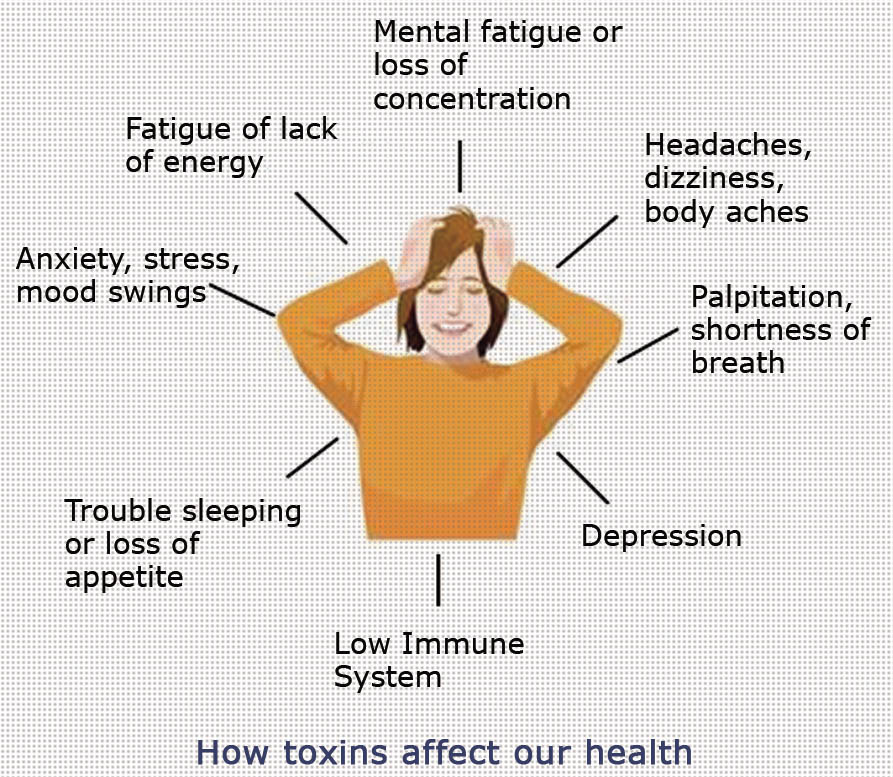
Everything we eat, drink, breathe or absorb through our skin has to be processed and eliminated by our bodies. Anything like this that is foreign to the body is called a xenobiotic, and when we refer to toxins in Environmental Illness, we are usually talking about xenobiotics. In cases of multiple chemical sensitivity (MCS) the mechanisms our bodies use for processing toxins stops working efficiently. The body either stores the chemicals in body tissues to deal with later (when you’re healthier), or tries to process them using an alternative pathway that might not be so efficient. In terms of specific toxins, some of the most hazardous yet commonly encountered ones include:
Bisphenol-A (BPA) and Bisphenol-S (BPS) – Used in the manufacture of polycarbonate plastics eg drink bottles, and toys. Bisphenols are oestrogen- mimicking chemicals that can leach into food or drinks from the plastic containers holding them. Look for BPA-free plastic bottles or choose glass instead. Canned goods are also a source of BPA as they are often lined with plastic, so choose jars over tins.
Chlorine – The most common disinfection techniques used at water treatment facilities today involve the use of chlorine, chloramines, and chlorine dioxide to kill harmful, microorganisms in the water, making it safe to drink.
Unfortunately toxic chemical by-products can be formed when these disinfectants react with natural organic matter like decaying vegetation in the source water. Studies show that chlorine can be absorbed through the skin and via inhalation (eg when showering) and can enter straight into the bloodstream. Fluoride – found in toothpaste, fluoridated water, and non-organic food (due to the widespread use of fluoride-based pesticides. For example, conventionally-grown iceberg lettuce can contain as much as 180 ppm of fluoride – 180 times higher than what’s recommended in drinking water).
EMFs – Electromagnetic field (EMF) exposures are becoming increasingly pervasive and affect your body’s cells. Read more here.
Mercury – found in dental amalgams and some fish. You can have mercury fillings removed and replaced with plastic or porcelain ones but if you have MCS, you should take great care—ask us for a dentist helpsheet. Regarding fish, the Food Standards Agency advises “Pregnant women and women intending to become pregnant should avoid shark, marlin and swordfish. They may also need to limit the amount of tuna they eat.”
Phthalates – found in soft plastics such as polyvinyl chloride (PVC), as well as many toiletries, including shampoo, toothpaste, and cosmetics. Phthalates are one of the most pervasive type of endocrine disrupting chemicals discovered so far, and have been linked to a wide range of developmental and reproductive “gender-bending” effects.
Pesticides— Not just sprayed on farmland, these include weedkiller and pet flea products as well as insecticides and garden pesticides. Have you noticed the weed-free kerbs and pavements? Local authorities regularly spray weedkiller in all public places including schools. Reduce your cumulative exposure by using organic methods of pest reduction at home. The environmental Working Group has produced a handy ‘Shopper’s Guide to Pesticides in Produce™’ which can help you determine which fruits and vegetables have the most pesticide residues and are the most important to buy organic. You can lower your pesticide intake by avoiding the 12 most contaminated fruits and vegetables and choosing the least contaminated produce.








